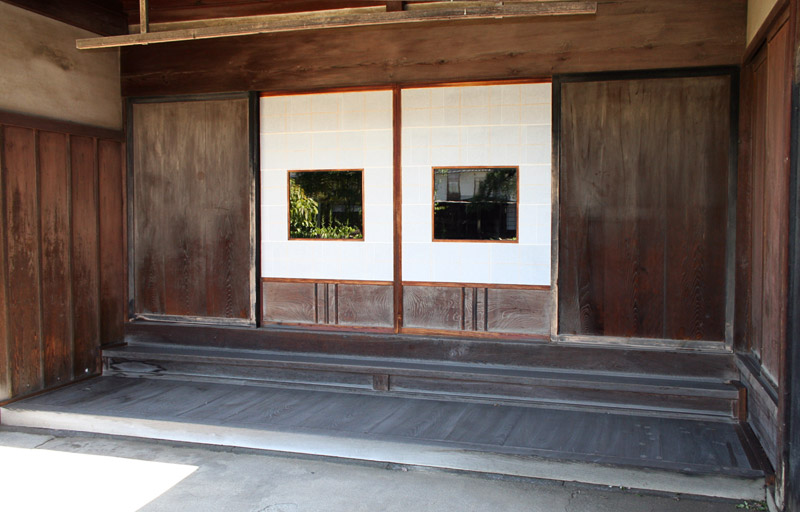|
||
 |
||
1 A low broad step or platform of timber, which had become a standard feature of the formal entrance hall *genkan 玄関 of upper class houses by the end of the 17c. It extended across the entire width of the entrance, with the boards laid parallel to the direction of approach. The depth of the shikidai varied from less than half a bay to one bay, about 40cm to 2m. It served not only as a convenient transition from ground level to the floor of the reception room beyond, but also as a stand for a palanquin kagodai 駕篭台, allowing the guest to alight directly onto a raised floor. The term is believed to be related to shikitai 式体, meaning to bow the head in greeting or to exchange formal greetings', a term already in use in the Heian period.

Horiuchi
堀内 house (Nagano)
2 An abbreviated term for *shikidai-no-ma 式台の間.
3 In urban vernacular houses *machiya 町家, in Aomori prefecture, a narrow platform, that projected from the raised floor living rooms kyoshitsubu 居室部, into the earth-floored area *doma 土間.
(C)2001 Japanese Architecture and Art Net Users System. No reproduction or republication without written permission.
掲載のテキスト・写真・イラストなど、全てのコンテンツの無断複製・転載を禁じます。

